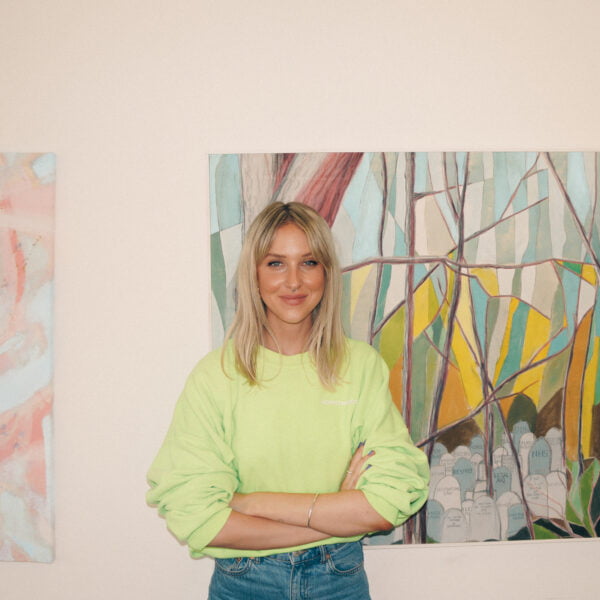
Natasha Collie
Senior Brand Marketing Manager at Penguin Random House UK
At the start of the year, Ladybird Books approached Sonder & Tell with a dream brief. In 2021, a year that’s been particularly challenging for...
In conversation with
Copywriter at Sonder & Tell

Our newest Copywriter Rae Boocock is a trained journalist. She spent spent years crafting and subbing copy at SUITCASE Magazine before joining our team this past July. The difference between writing editorial and for brands? ‘It varies. In long-form editorial it’s more “does this flow?” “does it make sense?” and often a lot of cutting. In copywriting, there’s more cross-referencing with briefs and asking “does this do the job?”’
When we asked Rae about her dream brand to work with, she told us: “Honestly, anything animals (read: cats), interiors and craft.” And we believe her. She sprinkles our Slack and WhatsApp channels with colourful crochet creations, niche travel facts and entertaining stories from the adventures of her three cats, Henry, Luna and Jude.
We spoke to Rae about her most common edit, her own tone of voice, and the rules of writing that she routinely follows.
It varies. In long-form editorial it’s more “does this flow?” “does it make sense?” and often a lot of cutting. In copywriting, there’s more cross-referencing with briefs and asking “does this do the job?”. But most often: hyphens used in place of en-dashes, correcting facts and stripping out overused phrases. As a fresh-out-of-uni junior sub at Livingetc, I struggled to catch dangling participles. Now they’re the first thing I see.
I think it comes down to purpose. Journalism is written to inform, entertain and generate debate; copywriting might do these things but, between the lines, it wants to make the reader act. There’s so much crossover, though.
For me, editorial – especially features – feels self-indulgent. With more word count, you’ve got room for more perspectives, tangents and experimenting with language. There’s often more time to deep dive into research and more first-hand experience too. It’s you on a page. Your byline. Copywriting has more boxes to tick in less space. Every word counts. It’s a real skill to be able to jump between clients’ voices, and the outcome feels like a team effort. Copywriting has made me a better editorial writer, and think differently as a sub editor too.
I love it when brands overlap with my personal interests. That could be food waste with Oddbox or Stitch & Story’s textile crafts – I crocheted a cushion after writing their story. Working on Lick’s positioning has been great too, building on my interiors knowledge from Livingetc and copywriting for furniture brands, hotels and high-end estate agents. My living-room wall was a dusky-terracotta Red 03 before the project began!
I loved playing teacher as a kid, and writing a tone of voice feels like that. It’s where creative storytelling meets very practical literary devices and how to use (and abuse) the grammar rules I flex as a sub.

Honestly, anything animals (read: cats), interiors and crafts. Food, travel and history too. Right now I’d pick Inigo or something related to Brighton, where I live. I love the spirit of this city and its community, and there are so many ways that the tourism board and marketing around Pride, Fringe and even the Pavilion could get it across that bit better.
“I loved playing teacher as a kid, and writing a tone of voice feels like that. It’s where creative storytelling meets very practical literary devices and how to use (and abuse) the grammar rules I flex as a sub. ”
There’s an old quote from a Washington Post writer: “Journalism is the first rough draft of history.” I spent hours in archives for my history degree, not just looking through old newspapers, but letters, adverts, even 1970s milk-bottle labels for a dissertation. It makes me think about what our writing means long term, beyond pleasing clients and readers today. Will someone find meaning in it a century from now? What stories aren’t being recorded? My brain hurts if I dwell on it too much.
Spoken aloud? A rambling cliché. Warm like a cuppa. A bit sweary. A lot better on paper.
Learning and growing. It’s refreshing to be in an environment that encourages creativity that’s nothing to do with deadlines. In the three months or so I’ve been here, there’s been a writing retreat (with sea swimming!) coaching, book clubs and weekly writing exercises too – and workshops with Vikki Ross on the horizon. Getting nerdy about words and ideas with the team is the best, and I’ve already felt my work improve for it.

Senior Brand Marketing Manager at Penguin Random House UK
At the start of the year, Ladybird Books approached Sonder & Tell with a dream brief. In 2021, a year that’s been particularly challenging for...

Founder Of Simple Politics
Talking about serious issues doesn’t mean defaulting into a serious tone of voice, or using complicated language. If anything, accessibility, clarity and a touch of...

Brand & Community Manager at Homethings
Creating a tone of voice from scratch can be challenging. But a blank slate to work from also mean there’s room for something a bit...

Head Of Marketing for Rude Health

Founder of By Rotation